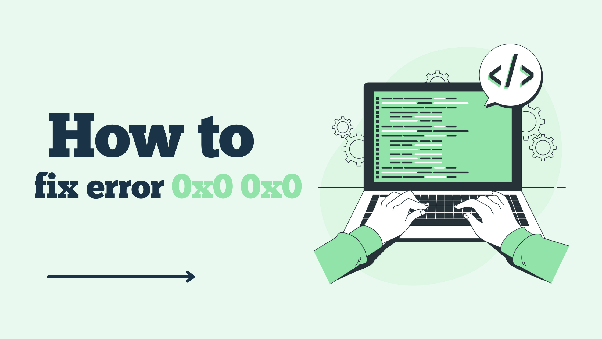The realm of binary code is vast, intricate, and, at times, seemingly abstract. Among the many sequences and configurations we come across, the “0x0 0x0” pattern has both intrigued and baffled many. In this in-depth exploration, we will unravel the mystery of this particular sequence, its significance, and its applications.
The Basics of Binary Code
To fully appreciate the “0x0 0x0” configuration, we first need to understand the fundamentals of binary code. Binary, a base-2 number system, relies solely on two numbers: 0 and 1. These numbers are termed as ‘bits’. The binary system is the backbone of digital computation, with bits serving as the smallest unit of data storage in computers.
Every information, from a simple text document to a high-resolution image, is stored in binary format within digital devices. This transformation from tangible information to binary involves a series of encoding and decoding processes. But what’s the significance of the prefix “0x”?

The 0x Prefix: What Does It Denote
In computer terminology, the “0x” prefix denotes that the number that follows is in hexadecimal format. The hexadecimal system, often shortened to ‘hex,’ is a base-16 number system. It encompasses numbers from 0-9 and letters from A, with ‘A’ standing for ten and ‘F’ for fifteen.
Thus, “0x0” essentially indicates a number in hexadecimal format. However, since the number following the “0x” prefix in this case is “0”, it represents the same value in both decimal and hexadecimal systems. Essentially, “0x0 0x0” is a way to articulate a binary value in a hexadecimal format, emphasizing its place in a sequence or array.
The Significance of 0x0 0x0 in Memory Allocation
Memory Addressing and Null Pointers
In computer programming, the “0x0 0x0” sequence has a specific and critical connotation. It’s often linked with a ‘null pointer.’ In simple terms, a pointer in programming languages like C or C++ is a variable that holds the address of another variable. A null pointer is a pointer that doesn’t point to any address or data, signifying an absence of value.
In many programming environments, a null pointer is represented by the address “0x0”. When a programmer encounters this address, it clearly indicates that the arrow isn’t associated with any valid memory location. Attempting to access or dereference such a pointer can lead to errors or unintended consequences in a program.
Practical Implications and Precautions
Understanding the implications of using or encountering “0x0 0x0” in programming is essential.
Errors and Crashes
One of the most common pitfalls in programming is the infamous “null pointer dereference.” This error occurs when a program tries to access data through a null pointer. Since the arrow points to the “0x0 0x0” address and not to any valid memory location, this action can cause the program to crash. Thus, developers must check for null pointers before dereferencing them.
Security Concerns
Null pointers can also be a security vulnerability. Crafty attackers might exploit null pointer dereferences to execute arbitrary code or cause a denial of service. Consequently, modern programming environments often implement safety measures to detect and handle these scenarios.

The Art of Debugging: Tracing 0x0 0x0
For software developers, encountering an unexpected “0x0 0x0” can clearly indicate something’s amiss. Debugging tools and techniques often highlight this sequence to aid developers in identifying null pointer issues or uninitialized variables.
By understanding the context in which “0x0 0x0” appears, developers can trace back to the root of the problem. Whether it’s a missed initialization, a faulty memory allocation, or an unforeseen logical error, recognizing this sequence can be the first step in a detailed debugging journey.
Decoding Symbolism: 0x0 0x0 Beyond Technicalities
Beyond its technical significance, the sequence “0x0 0x0” holds a metaphorical allure for some. In certain subcultures, especially those surrounding cyber arts and digital aesthetics, such binary or hex sequences are embraced as symbols of the digital age. The void represented by “0x0 0x0” can be seen as the vast emptiness of the digital cosmos, or the potential of an uncharted digital canvas. Just as artists have long been fascinated by the blank page or canvas, digital creators might see sequences like “0x0 0x0” as emblematic of pure potential in the virtual realm.
The Mathematical Elegance of 0x0 0x0
In the mathematical domain, there’s an appreciation for symmetry and patterns. The sequence “0x0 0x0” embodies both. Mathematically, zero holds its own unique charm; it’s the integer that denotes the absence of quantity, a concept that’s crucial in arithmetic, calculus, and countless other fields. Representing zero in both binary and hexadecimal formats, as in “0x0 0x0”, emphasizes its universality across number systems. For math enthusiasts, it’s a nod to the interconnectedness of diverse mathematical realms and a celebration of the elegance inherent in such simplicity.

Conclusion
The “0x0 0x0” sequence, while seemingly simplistic, holds profound importance in the realm of computer science and programming. It serves as a sentinel, a beacon highlighting potential pitfalls or areas of concern in code. Software developers and computer enthusiasts can navigate the digital landscape with increased awareness and precision by understanding its significance and implications. Like many aspects of the digital world, it’s a reminder of the intricate dance between simplicity and complexity, where even the most unassuming sequences can hold layers of meaning.
Also, Read The Following: citizens










Leave a Reply